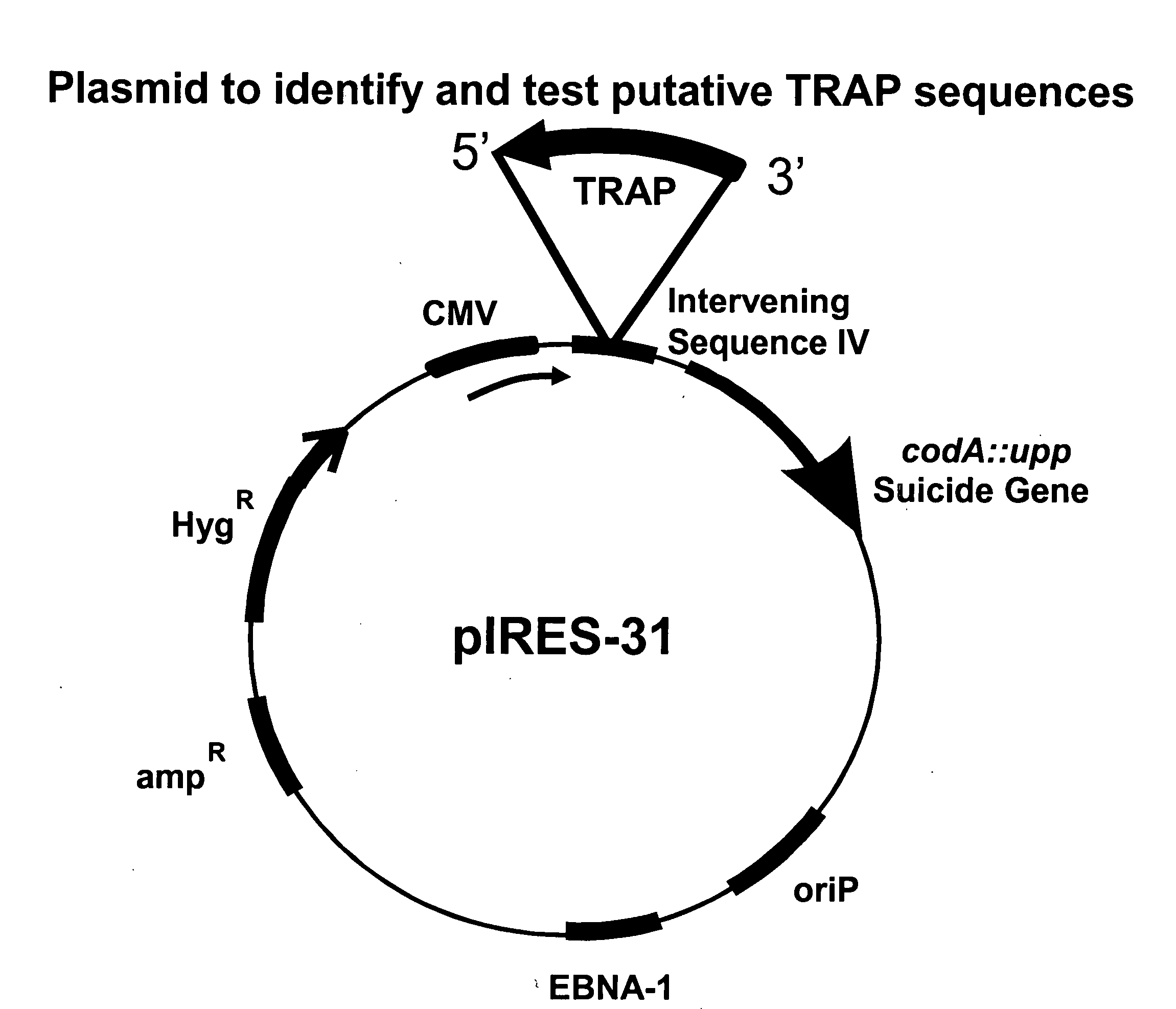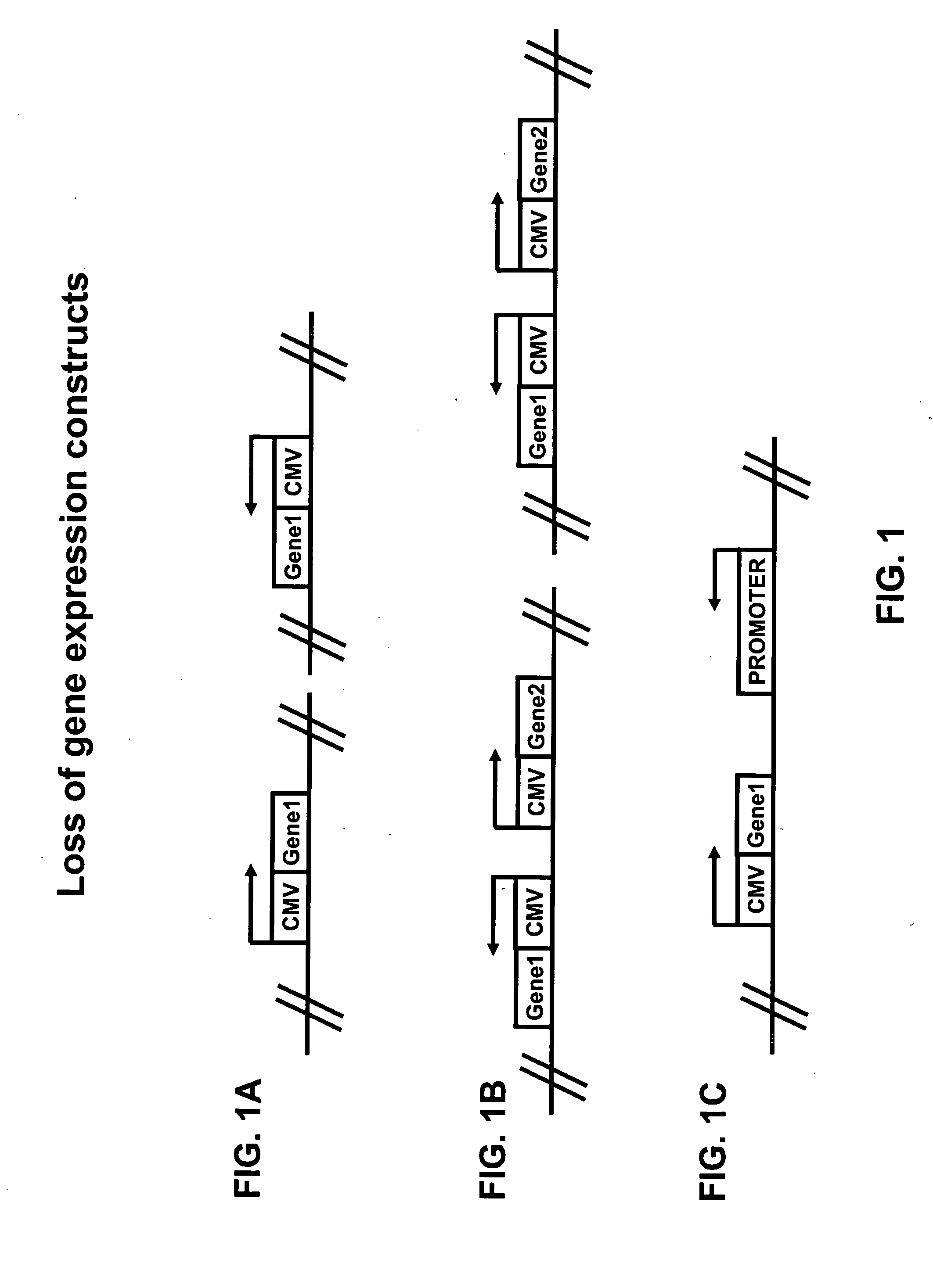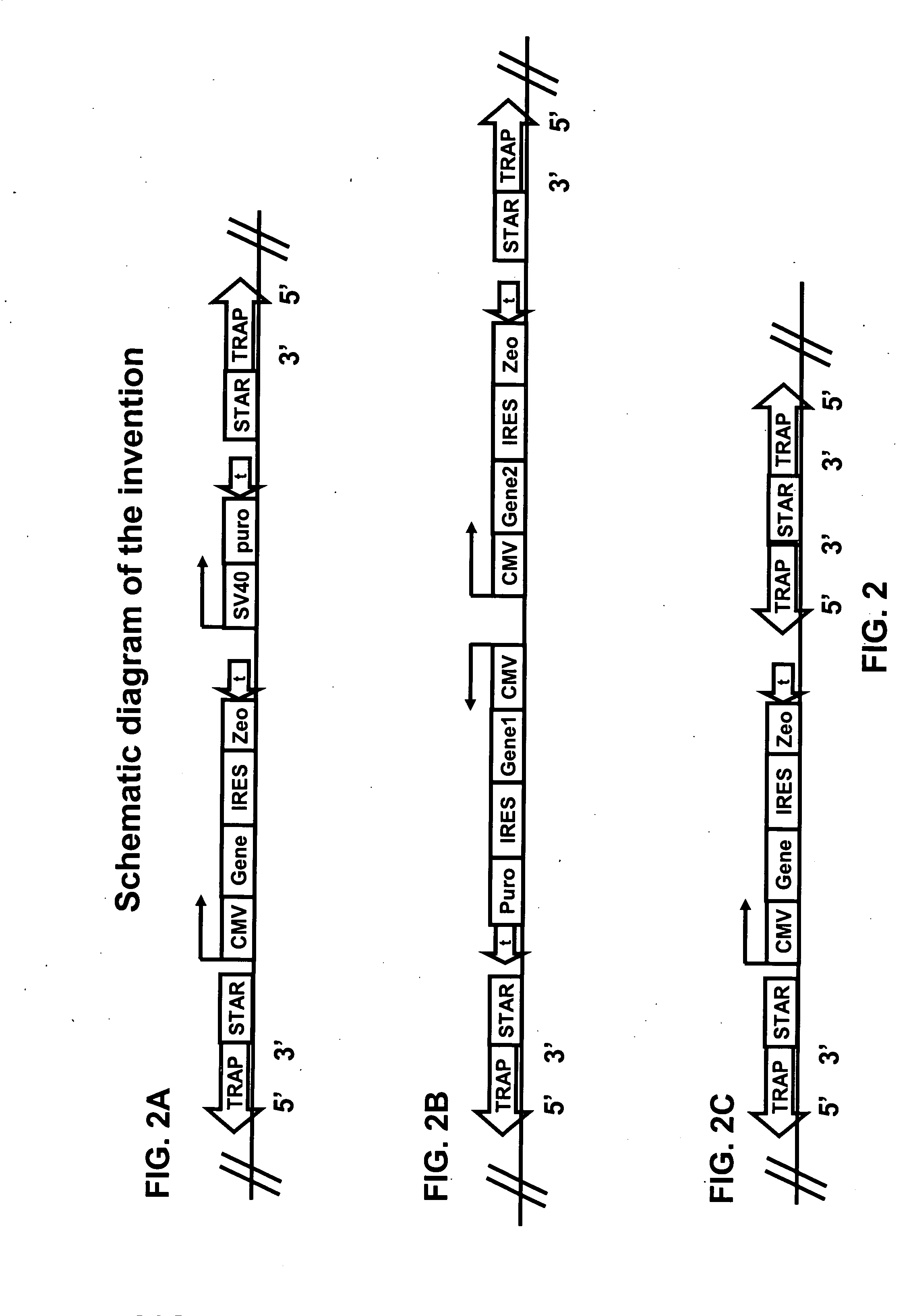Method for improving protein production
a protein and protein technology, applied in the field of biotechnology, biochemistry, molecular biology, pharmacology, can solve the problem that the unit is insufficient to prevent read-through transcription, and achieve the effect of reducing the amount of transcription and efficient protein production system
- Summary
- Abstract
- Description
- Claims
- Application Information
AI Technical Summary
Benefits of technology
Problems solved by technology
Method used
Image
Examples
example 1
Identification of TRAnscription Pause (TRAP) Sequence
[0104]The invention may be used to identify DNA elements that act as TRAnscription Pause sequences. In this example, we provide a method for identifying TRAP sequences.
Materials and Methods
Plasmids
[0105]For constructing pIRES-6, pIRES (Clontech) is taken as a starting plasmid. pIRES is cut with BglII and DraI, and the CMV promoter, intervening sequence (IV), IRES and SV40 polyadenylation signal ligated into pBSKS (Stratagene), cut with BamHI and EcoRV to create pIRES-1. Oligos STOP 1 (CTAGCTAAGTAAGTAAGCTTGG (SEQ ID NO:1)) and STOP 2 (AATTCCAAGCTTACTTA CTTAG (SEQ ID NO:2)) are ligated into NheI-XhoI cut pIRES1, creating pIRES-2. This results in three stop codons, in three different reading frames, in front of the IRES. Oligos BamHI-BglII-AscI (TTAAGGATCCAGATCTGGCGCGCC (SEQ ID NO:3)) and AscI-BglII-BamHI (TTAAGGCGCGCCAGATCTGGATCC (SEQ ID NO:4)) are annealed and ligated into BsaI cut pIRES-2, creating pIRES-3. In this way, AscI, BamH...
example 2
TRAP Sequences Block Transcription in a Directional Fashion
Materials and Methods
[0123]The experiments of Example 1 are referred to.
Results
[0124]As shown in FIG. 4, the orientation of the TRAP is an essential parameter in the action of TRAP sequences. The phage lambda (bp 35711-38103) serves only as TRAP in one 5′-3′ orientation (lane 2). When tested in the opposite 3′-5′ orientation (lane 3), no blocking of CMV-driven transcription is found at all. Similarly, the SPA and the combined SPA / Pause sequence block transcription only in the 5′-3′ orientation (lanes 8 and 9) and not in the 3′-5′ orientation (lanes 10 and 11). The orientation dependency of TRAP sequences is of importance for the orientation in which they can be used when flanking transgenes.
example 3
TRAPs Improve the Effects of STAR Elements on the Expression Level of Transgenes
[0125]One object of this invention is to improve transgene expression for heterologous protein production, thus increasing the yield of the heterologous protein.
Materials and Methods
Plasmids
[0126]The construction of the Plug&Play-d2EGFP-ires-Zeo (PP) vector is described below. Plasmid pd2EGFP (Clontech 6010-1) is modified by insertion of a linker at the BsiWI site to yield pd2EGFP-link. The linker (made by annealing oligonucleotides GTACGGATATCAGATCTTTAATTAAG (SEQ ID NO:9) and GTACCTTAATT AAAGATCTGATAT (SEQ ID NO:10)) introduces sites for the PacI, BglII, and EcoRV restriction endonucleases. This creates the multiple cloning site MCSII for insertion of STAR elements. Then primers (GATCAGATCTGGCGCGCCATTTAAATCGTCTCGCGCGTTTCG GTGATGACGG (SEQ ID NO:11)) and (AGGCGGATCCGAATGTATTTAGAAAAATAAACAAATAGGGG (SEQ ID NO:12)) are used to amplify a region of 0.37 kb from pd2EGFP, which is inserted into the BglII site of...
PUM
 Login to View More
Login to View More Abstract
Description
Claims
Application Information
 Login to View More
Login to View More - R&D
- Intellectual Property
- Life Sciences
- Materials
- Tech Scout
- Unparalleled Data Quality
- Higher Quality Content
- 60% Fewer Hallucinations
Browse by: Latest US Patents, China's latest patents, Technical Efficacy Thesaurus, Application Domain, Technology Topic, Popular Technical Reports.
© 2025 PatSnap. All rights reserved.Legal|Privacy policy|Modern Slavery Act Transparency Statement|Sitemap|About US| Contact US: help@patsnap.com



